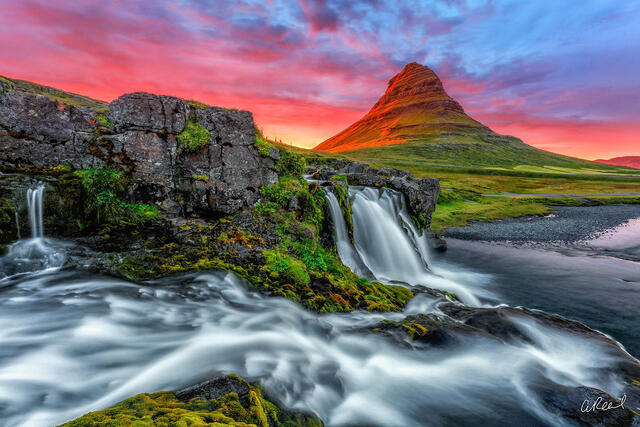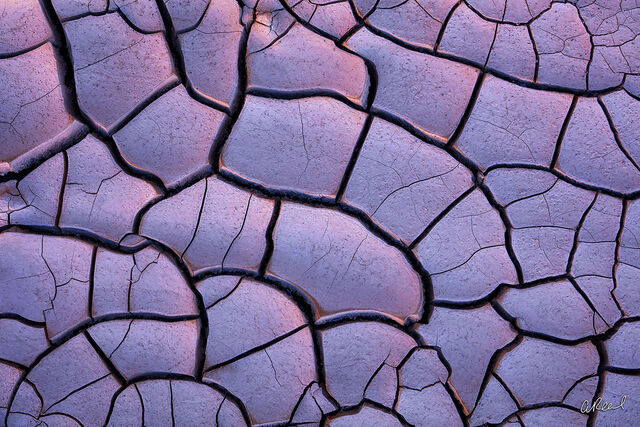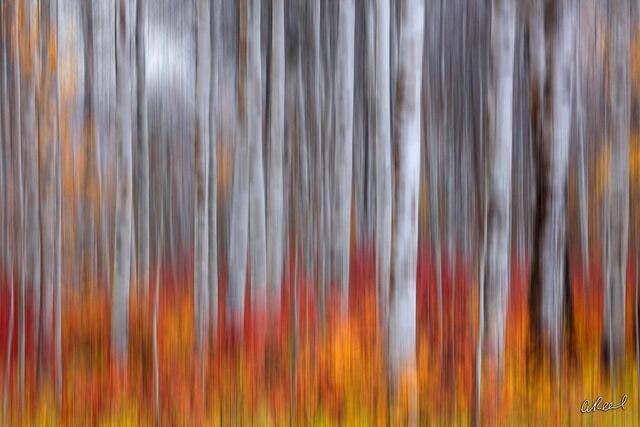Exploring Your World With Aerial Photography
Using a camera to capture a single moment is an artistic medium with a long history of experimentation and adaptation. For nearly two centuries, artists have strived to find innovative ways to produce exceptional images of the Earth’s wonders, from the ground as well as the sky.
Aerial photography was not always the art form it’s known as today, however. Like the birth of many artistic mediums, aerial photography evolved from merging the functional intent of its development with the creative curiosity of photographers.
The result was the ability to capture an entirely different perspective, and show passionate audiences new ways to view and interact with the world in which they live.
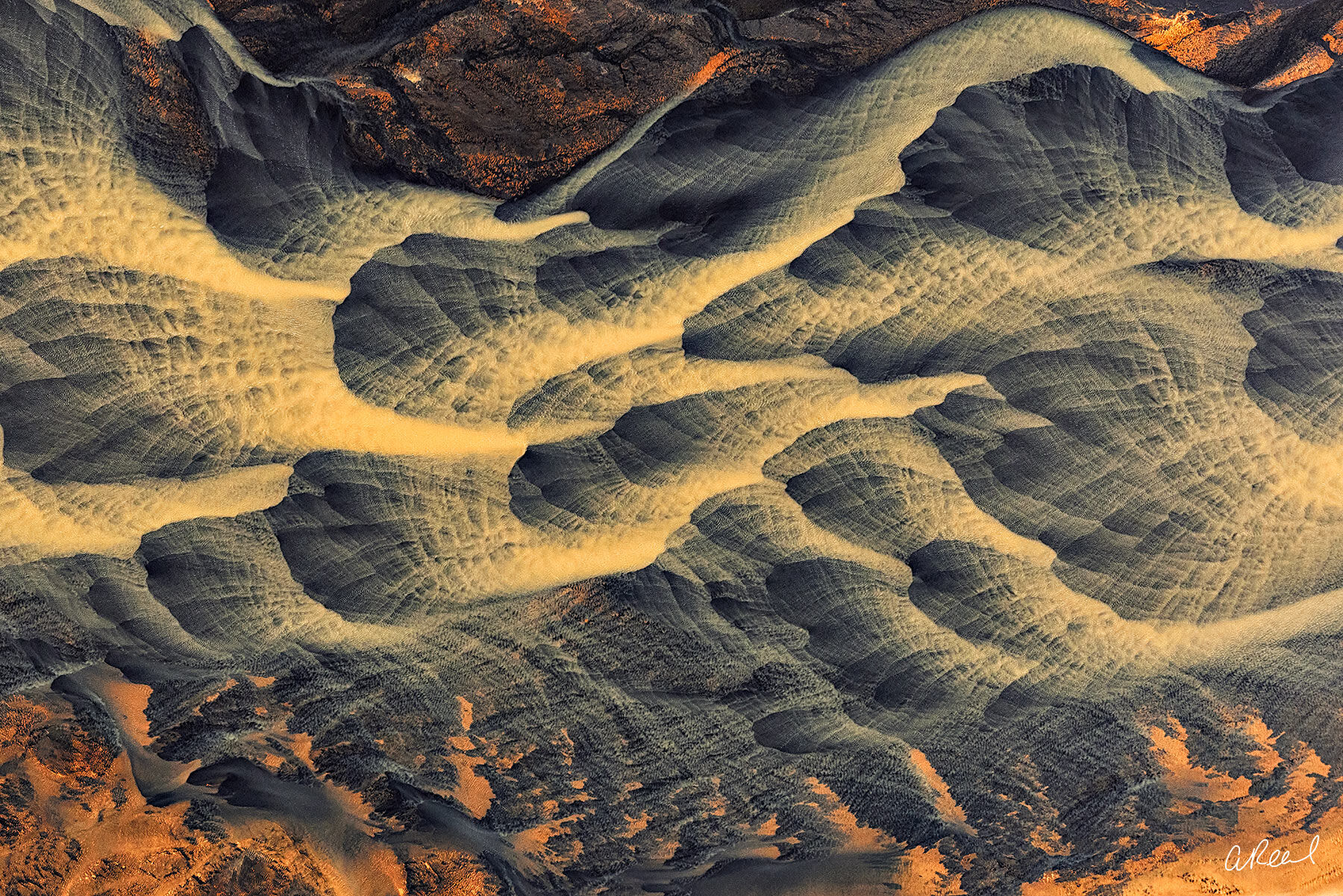
A sprawling floodplain is threaded by the scars of a braided river in southern Iceland. Erosion of the dark sands reveals the golden beds of clay beneath, creating a diaphanous aurora across the landscape, bordered by columns of orange fire. Fine Art Limited Edition of 50.
Aerial Photography in History
Aerial photography has existed for over a century and a half, but in its early years, this process served a more practical purpose than an aesthetic one. While the first two aerial photographs were taken to experiment with the medium’s possibilities, aerial photography later became crucial for land surveying and military strategizing.
Balloons, rockets, kites, and even pigeons were used to record early aerial photographs before the Wright brothers developed reliable aircraft.
Early aerial photographers captured cityscapes and topographic images, combining art, science, and history in one medium.
In fact, the first aerial photograph taken was by a French photographer known as Nadar who captured an image of his village (Petit-Bicêtre) in 1858. His photograph was lost to time, however, and the first surviving aerial photograph was taken by James Wallace Black, who documented a scenic view over Boston, Massachusetts in 1860.
Camera technology was limited during the inception of aerial photography, due to the weight of the camera, the timing constraints, and the potential for errors to occur during aerial captures. However, as the complicated collodion plates used in early photography were replaced with roll film during WWI, greater possibilities unfolded.
With the arrival of more advanced cameras and the rise of public air travel, the capabilities of aerial photography took flight.
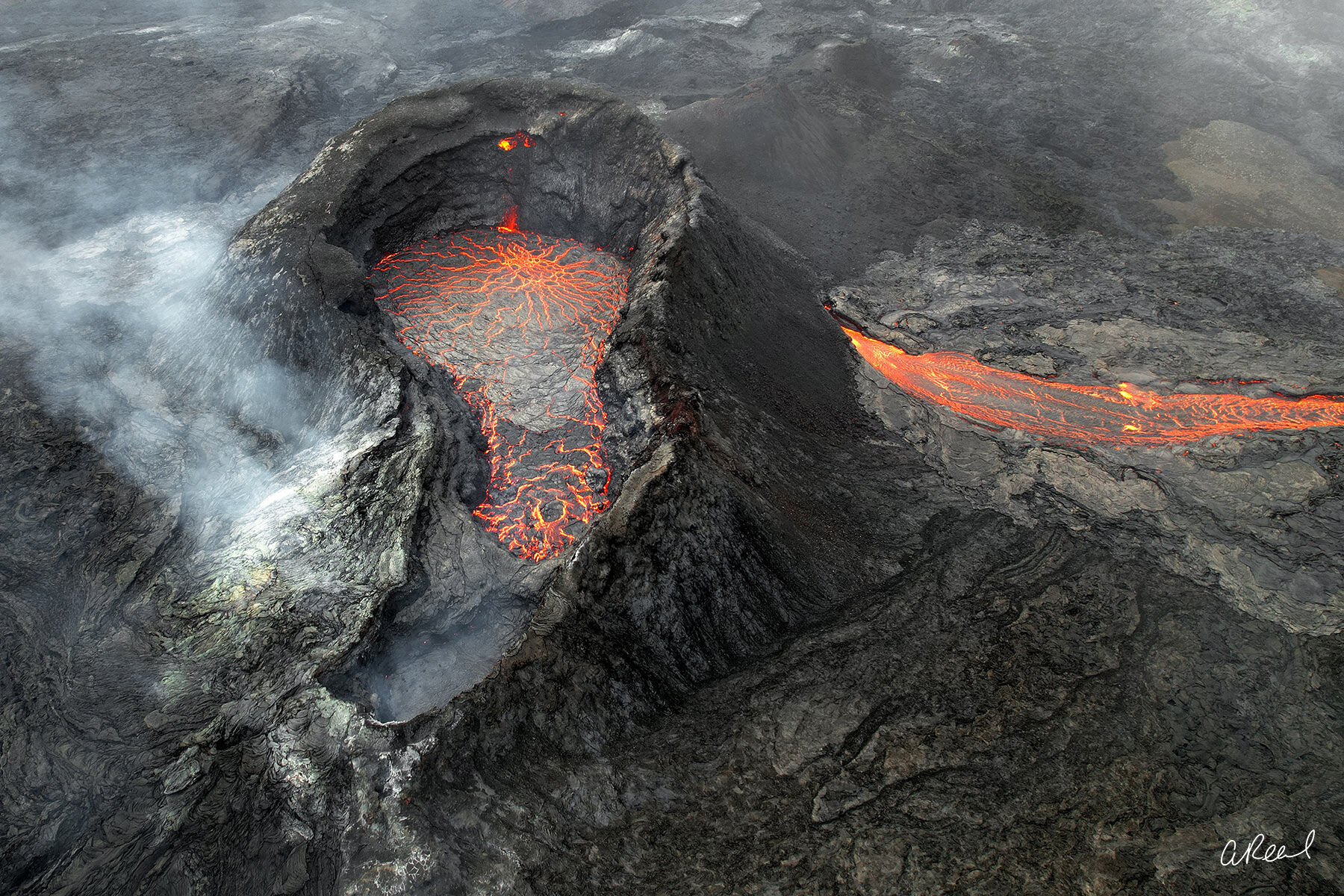
A crumbling cone of brimstone gives view into the molten heart of the Earth. A turbid stream of flaming rock meanders down the mountain to give birth to new shores in Iceland’s volcanic wonderland. Fine Art Limited Edition of 50.
Today’s Aerial Photography Methods
Thanks to advances in modern technology, aerial photography has become an artistic pursuit that many photographers can take part in. Today’s tools present a greater array of options for getting cameras into the sky, including satellites, aircraft, and drones. Satellite imagery is more geared toward the sciences, of course, while aircraft and drone technology has broader applications and availability for the general public.
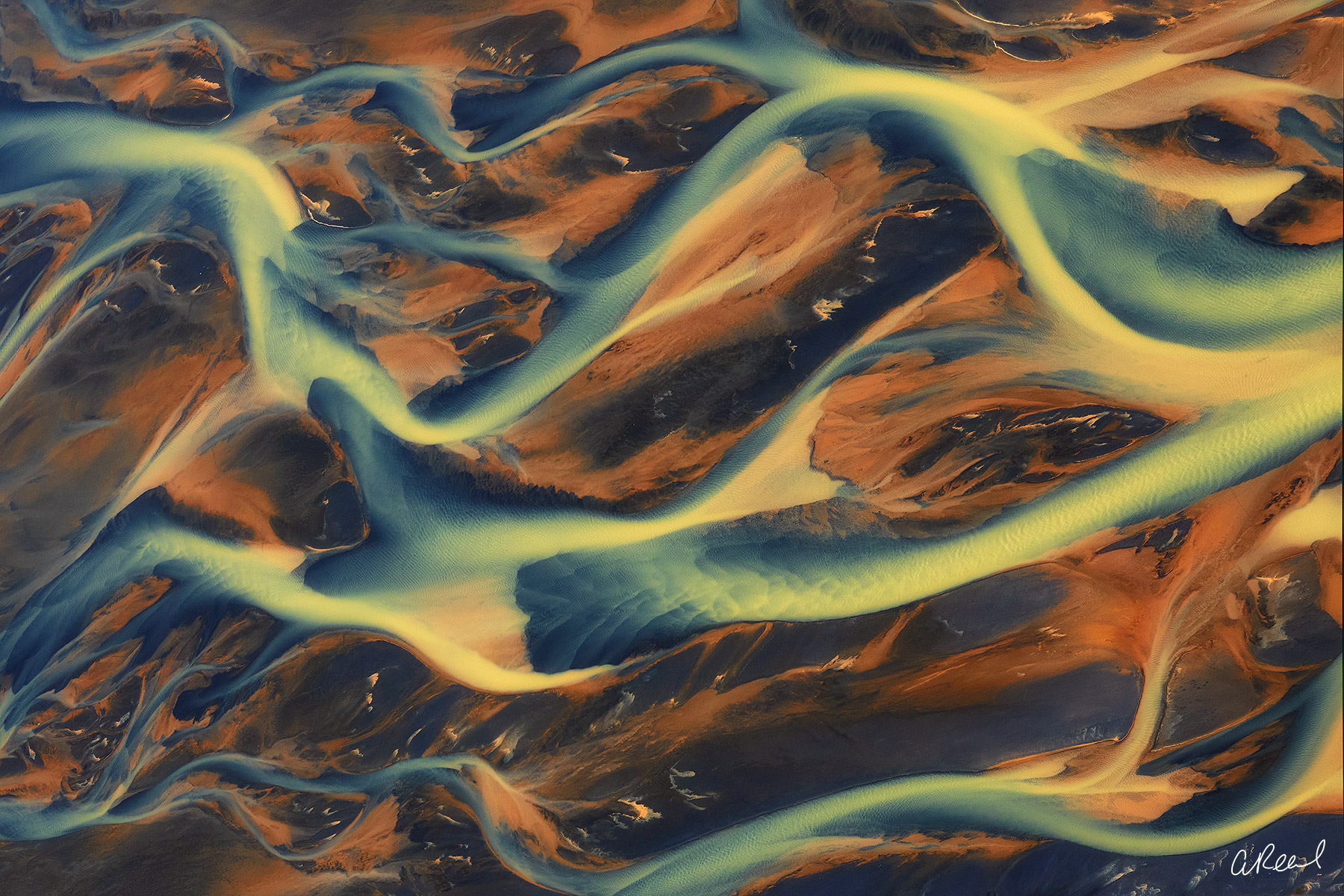
The phosphorescent tendrils of a mineral-rich river spray across the mottled canvas of an alluvial plain in southern Iceland. The bright flow cuts through the ancient sands, leaving behind a chaotic impression, like the whorls in a burl of wood. Fine Art Limited Edition of 50.
Aircraft Photography
For decades, taking photographs from inside an airplane or helicopter was the main method for pursuing aerial photography. While drone technology is now widely used, many photographers still prefer aircraft captures for several reasons. For some, following the methods of past photographers adds a sort of closeness to the art form. Other photographers value the experience of looking down at their scenes with their own eyes and discovering the composition firsthand.
Additionally, aerial photography captured from an aircraft allows photographers to use larger pieces of equipment to produce crisp, high-quality images.
However, aircraft photography comes with its own limitations. To have exceptional control over the scene, photographers typically have to hire a private plane or helicopter. Attempting to capture a series of images also comes with the risk of losing or damaging camera equipment, or in extreme cases even sustaining injuries.
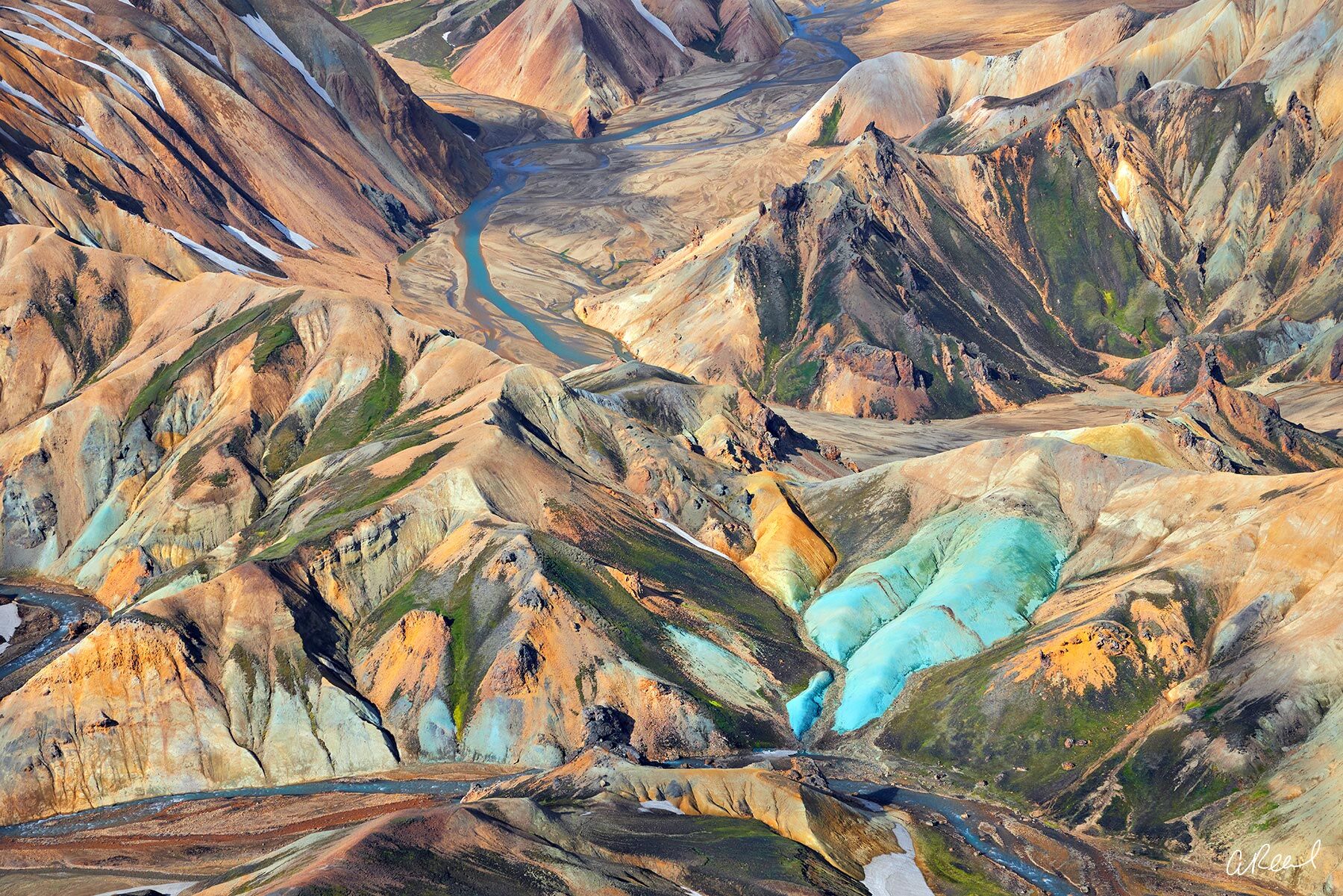
A chromatic jumble of hills and valleys paints a splendorous scene in Landmannalaugar in Iceland. Rich rainbow mineral deposits and the slow action of water and time have created a strange maze of staggering beauty in the land of glaciers and volcanoes. Fine Art Limited Edition of 50.
Drone Photography
Drones have become widely used in aerial photography throughout the past few years. These small, unmanned vehicles help make aerial photography accessible to a wider audience due to their affordability and relative ease of use.
A remote-controlled drone fitted with a camera provides photographers with capabilities that aren’t easily accessible through traditional aircraft photography. Once a photographer has mastered their machine’s controls, the drone can be used to greatly enhance image parameters. The small size and remote controls make it far easier to maneuver for the perfect capture.
On top of convenience and freedom of movement, owning a drone empowers photographers to explore new image possibilities whenever they desire without additional money spent.
While there are several benefits to drone photography, there are negatives to consider as well. For one, laws prohibit the use of drones and drone photography in certain areas, especially natural areas with lots of wildlife, so photographers need to be aware of the legal scope of each flight.
Photographers who want to use drones to capture aerial images must also consider camera weights compared to drone weight limits, range and battery limits, and the challenge of monitoring scenes through a small remote screen.
Fortunately, photographic drones come in several price ranges, making them quite affordable for photographers who want to experiment with drone photography before investing in expensive equipment. A decent beginner’s drone has a typical price range of $500 to $1,000 while a more professional one will cost several thousand dollars.
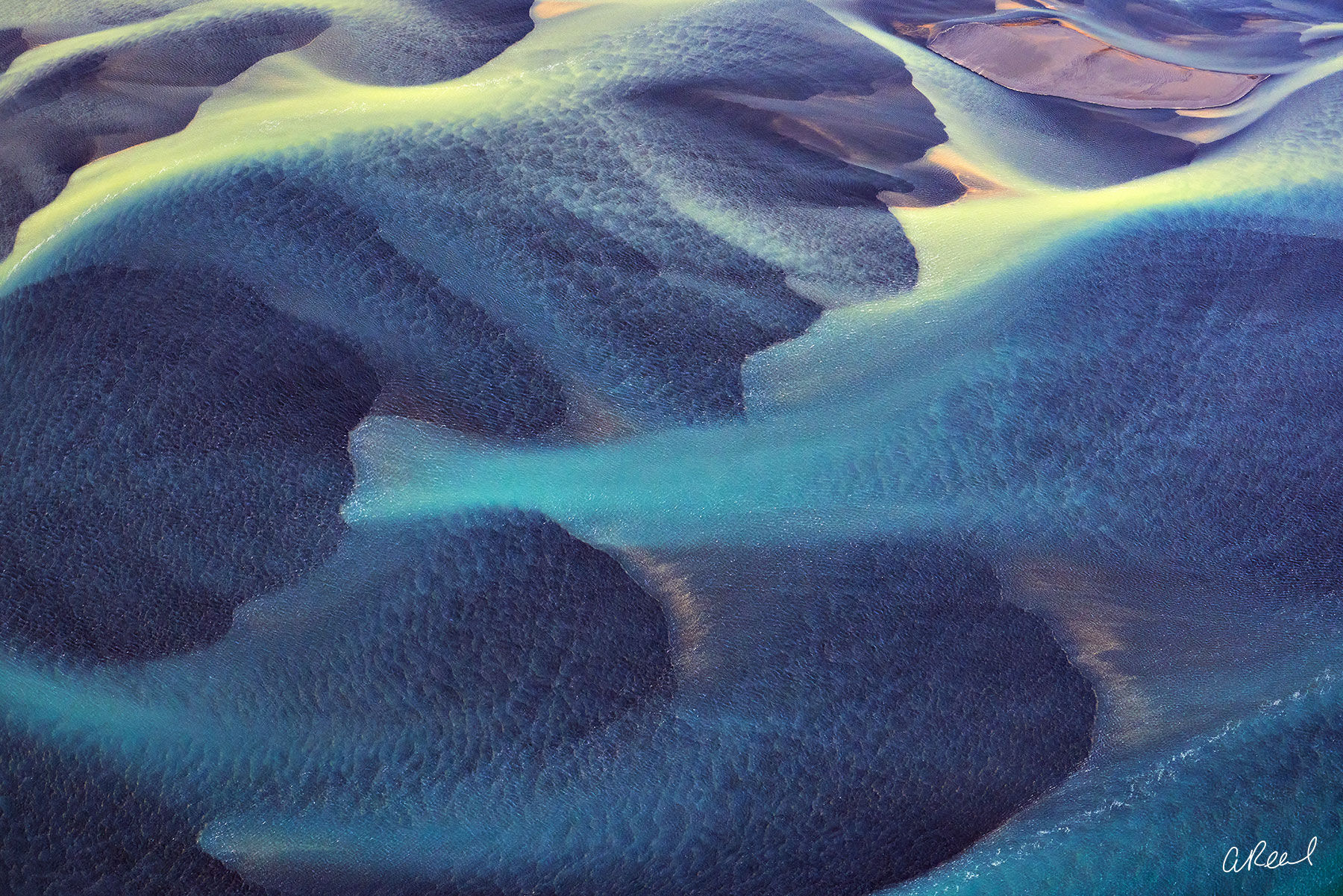
Fans of wind-tossed water glide across the sediment fields of southern iceland. Appearing like the wings of a giant butterfly, hidden pockets of violet, teal, and gold minerals are excavated by the current and drawn out in ribbons across the land. Fine Art Limited Edition of 50.
Common Subjects
Aerial photography combines art with science and entertainment. As such, many of today’s common subjects involve the natural world or events and locations populated by people. Throughout the history of aerial photography, photographers have largely focused on wildlife, natural environments, sporting events, and cityscapes.
Nature and wildlife photography, like the images seen in publications like National Geographic, showcase the brilliance of the natural world which the public doesn’t ordinarily get to see. Images like these inspire curiosity and interest in the behaviors of animals and the way that land and sea evolve.
By comparison, cityscape photography captures images of what’s familiar but displays buildings, streets, and landmarks from angles that defy common perceptions. Though the concept of cityscape photography has remained fairly constant since its beginnings, the intent has evolved beyond functional purposes to present the interaction of construction and nature as art.
Talented aerial photographers have published their work to audiences for over a century, and have established a central discipline in photography that continues to thrive today. A few of many remarkable artists in this medium include Yann Arthus-Bertrand, Talbert Abrams, Eduard Spelterini, Ben Moore, Bachir Moukarzel, Sebastien Nagy, and Albert Dros.
Aerial photography grants artists the opportunity to be a part of the scene they’re capturing by taking their vision to previously unimaginable heights. As technological advances have enhanced the reach of aerial photography, gifted photographers are more capable than ever of sharing pieces and places that would have been impossible and inaccessible during the early days of photography. Combining technology with a passion for the visual arts makes the sky truly the limit when it comes to aerial photography.
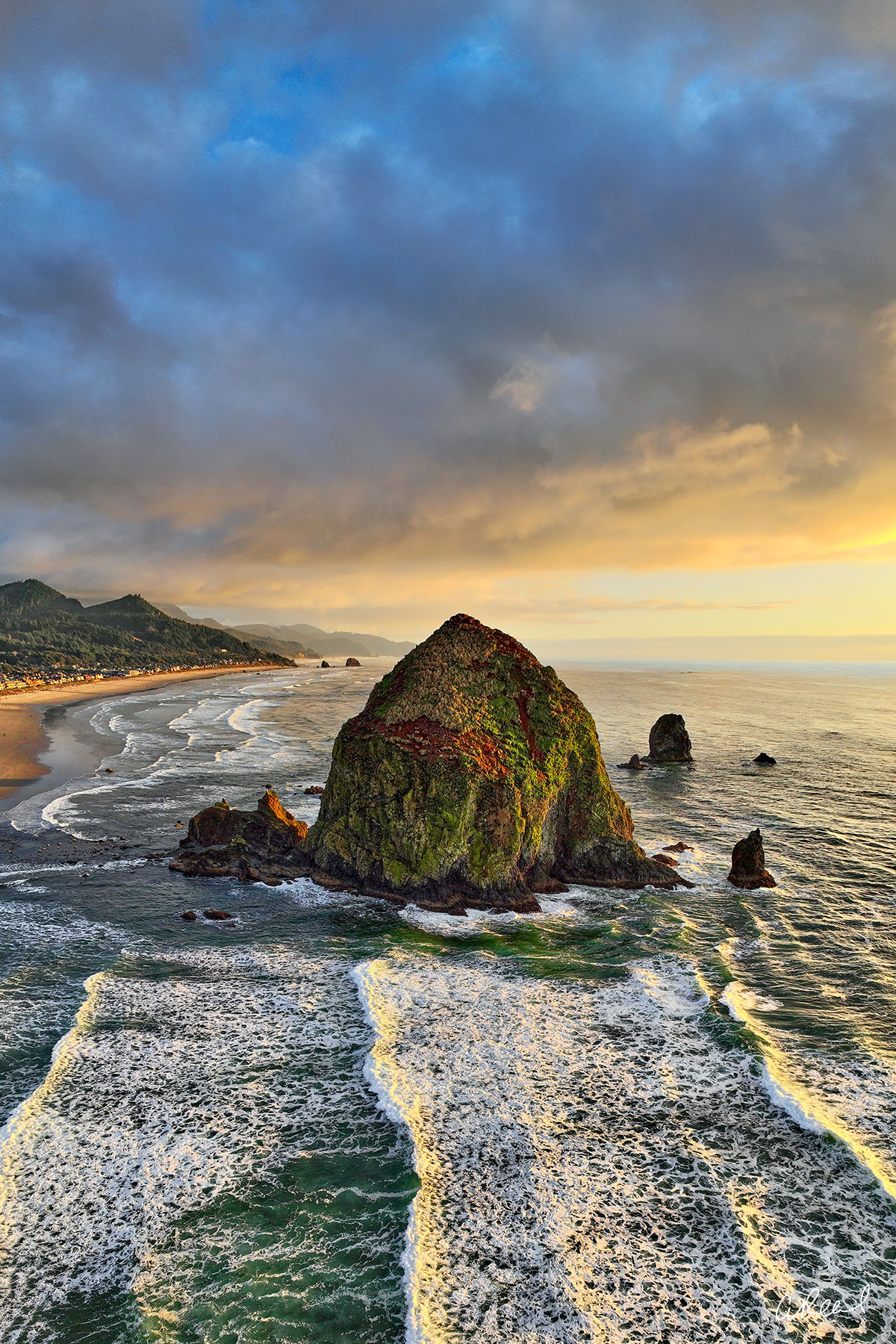
The huge monolith of Haystack Rock juts from the surf along Oregon’s coast at Cannon Beach. A garden all of its own, the basalt tower stands testament to a lost coastline of volcanic basalt now resting beneath the waves. Fine Art Limited Edition of 50.

